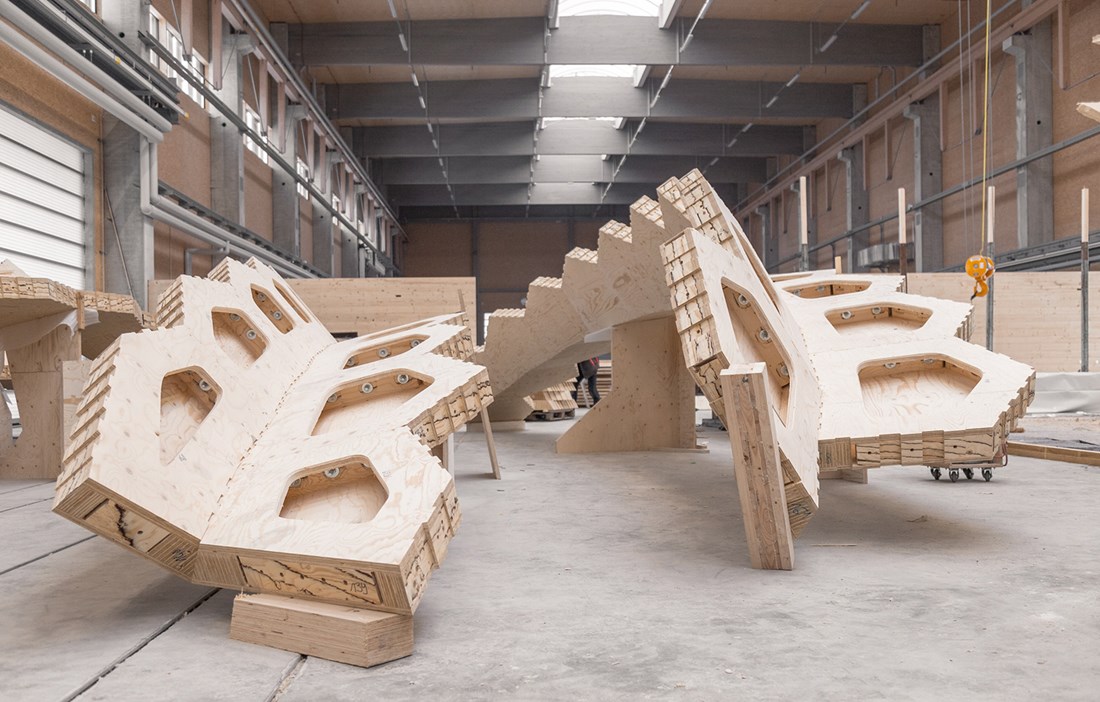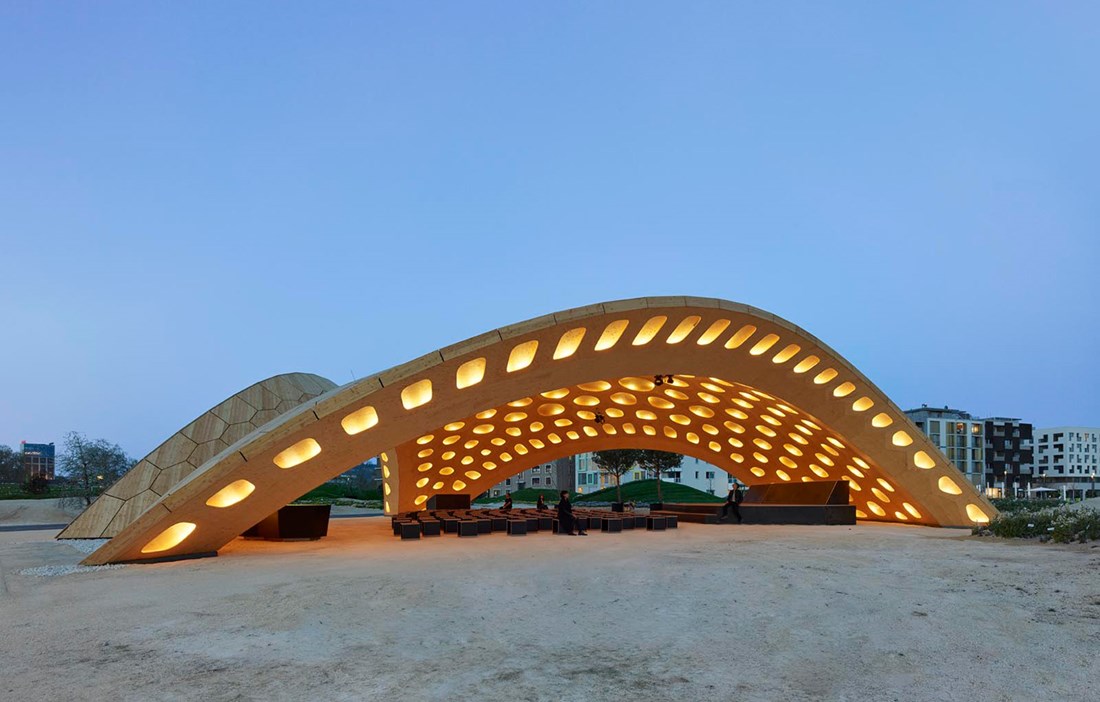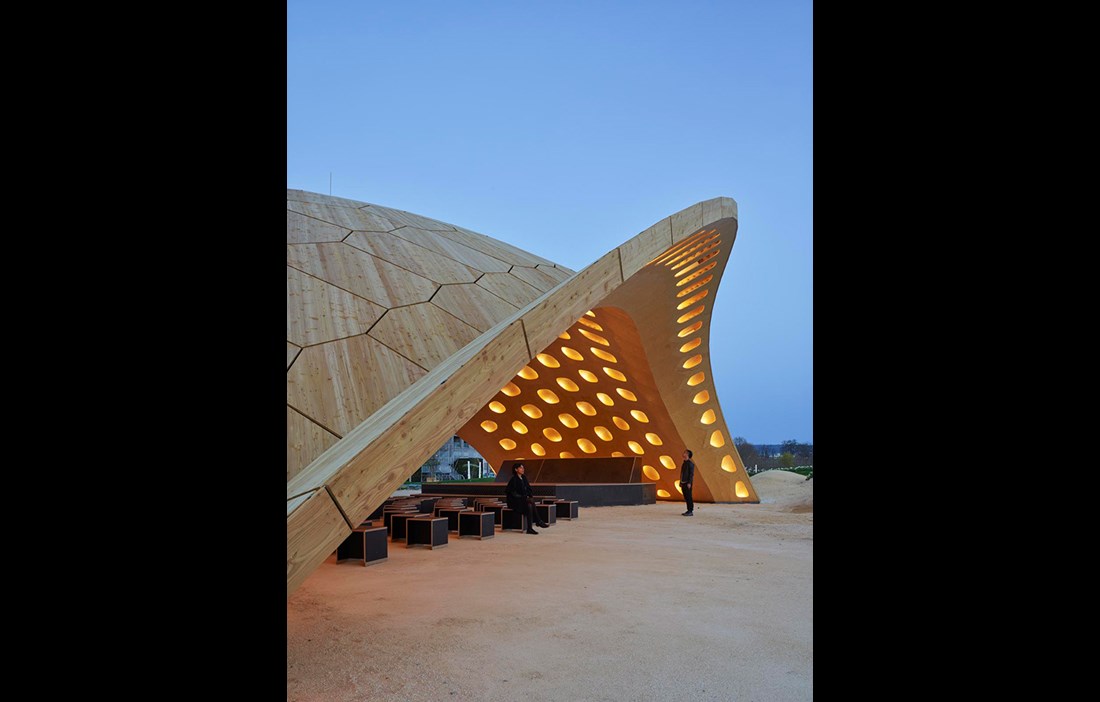Buga is a pavilion made of spruce glulam, built using robot technology and based on a concept of minimising material use through the shape of the design. It is also the University of Stuttgart’s entry for this year’s Bundesgartenschau exhibition in Heilbronn.
The pavilion measures 32 x 25 metres and comprises 376 polygonal wood panels. The structural engineers studied the skeleton of sea urchins and then applied the same principle to develop the advanced structure. Each segment is made up of six layers: the base plate is followed by a layer of glulam joists, and on top of that is a panel, all made of spruce. Topping this structure is a waterproof membrane, followed by mouldings that help rainwater to run off, and finally there is a layer of façade cladding in larch plywood.
The segments are bound together using a total of 17,000 finger joints. Thanks to the design and the hollowness of the segments, the self-supporting structure weighs only 38 kilos per square metre.
The building is the result of a collaboration between multiple institutions, within both design and construction technology, and is part of a project that also developed a 14-axis robot that was able to join the segments and mill the finger joints with micrometre precision.
In addition to this pavilion, the University of Stuttgart is also contributing a pavilion made from glass fibre and carbon fibre elements.
Read more at icd.uni-stuttgart.de


























